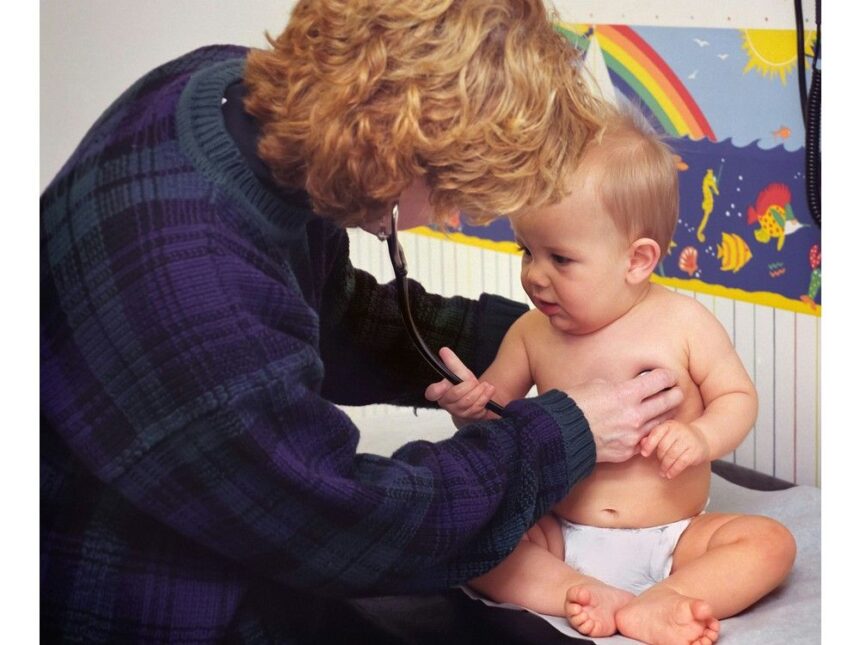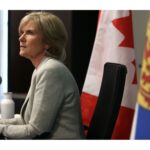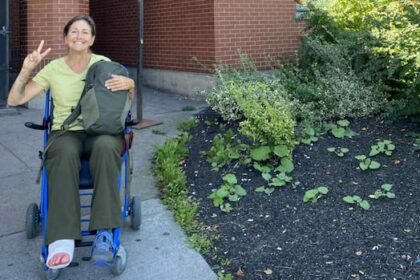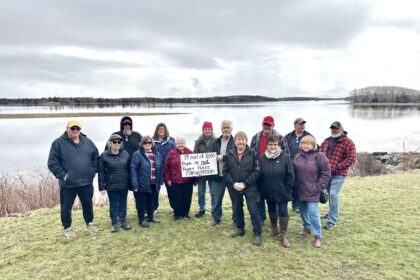Published Apr 12, 2025 • Last updated 18 hours ago • 8 minute readAfter years of limiting the number of doctors as a way of controlling health-care costs, provincial governments have been hit with a very real physician shortage, writes Michael Gardam. UnsplashThe patient registry is again a hot topic during this session of the P.E.I. legislature. While the list was recently cleaned up to remove people who no longer need a family doctor, it has proven very difficult to make a serious dent in what has been a multi-year wait for a long time. Despite many initiatives, announcements and assurances that things will get better, there has not been significant improvement.THIS CONTENT IS RESERVED FOR SUBSCRIBERS ONLY.Subscribe now to access this story and more:Unlimited access to the website and appExclusive access to premium content, newsletters and podcastsFull access to the e-Edition app, an electronic replica of the print edition that you can share, download and comment onEnjoy insights and behind-the-scenes analysis from our award-winning journalistsSupport local journalists and the next generation of journalistsSUBSCRIBE TO UNLOCK MORE ARTICLES.Subscribe or sign in to your account to continue your reading experience.Unlimited access to the website and appExclusive access to premium content, newsletters and podcastsFull access to the e-Edition app, an electronic replica of the print edition that you can share, download and comment onEnjoy insights and behind-the-scenes analysis from our award-winning journalistsSupport local journalists and the next generation of journalistsRegister to unlock more articles.Create an account or sign in to continue your reading experience.Access additional stories every monthShare your thoughts and join the conversation in our commenting communityGet email updates from your favourite authorsSign In or Create an AccountorArticle contentFixing access to primary care is one of those challenges that seems simple at face value but is actually highly complex. Complex problems require multiple solutions all at once i.e., there is no one big fix. Those solutions themselves can cause unintended consequences, so it is important to think ahead, plan, create high level strategies, and be prepared to change course if things don’t go the way you expected them to. This might sound obvious, but in our highly politicized climate, it is very hard for governments to change course in light of emerging information.Recommended from Editorial MICHAEL GARDAM: Are out-of-hospital procedure centres a good thing? Maybe MICHAEL GARDAM: Evidence addresses safe injection site concerns Why is hiring all the family doctors Islanders need so difficult?ImmigrationUntil recently, P.E.I. was the fastest growing province and obviously newcomers to the Island were added to the registry. When I was CEO, I plotted the volume of immigration against the size of the registry — I found that the health-care system was only able to care for the same number of people in 2023 as it was several years before. So, 5,000 newcomers to the Island meant adding 5,000 more people to the registry. With higher than normal rates of immigration across the country, this problem is not unique to P.E.I.Article contentSupply of doctorsMuch has been said about the national shortage of family doctors, and this an argument for launching the Memorial University (MUN) satellite medical school. As we know from the Peachy and Spindle reports, even if all 20 graduating students sign on to P.E.I. each year after finishing their residencies, this still won’t provide the Island with enough doctors when one accounts for retirements, emigration, increasing needs and growth of the population, and demands of the MUN medical school.On average, P.E.I. has an older physician population. Baby boomers are now retiring in great numbers and there isn’t a supply stream to replace them. Furthermore, younger doctors rightfully want better work-life balance than their predecessors, meaning that it is not a simple 1-to-1 replacement since they are unwilling to take on the high patient loads that used to be the norm.After years of limiting the number of doctors as a way of controlling health-care costs, provincial governments have been hit with a very real physician shortage. While the baby boomer retirement trend has been foretold for years, provinces failed to ramp up numbers of physicians, and the situation was made far worse with the pandemic.Article content Liberal MLA Gord McNeilly chats with Green MLA Karla Bernard before question period. McNeilly likened the PC platform promise to clear the patient registry by this year to a cruel April Fool’s joke. Photo by Stu Neatby /The GuardianP.E.I.’s approach to physician supply management was the misunderstood physician complement policy, which capped the number of doctors who could practise in each area of the Island. As a result, Canada is well below other developed countries in terms of physicians and medical students per capita. A large number of Canadians attend medical schools in other countries, but historically it is hard for them to return to Canada to practise. Similarly, it is hard for most foreign trained non-Canadians to practise here.Over the past few years, the media has reported that fewer Canadian medical school graduates are choosing to become family physicians. This speaks to the general trend of increasing specialization in medicine, but it also highlights that family medicine is not an easy job and can wear people out. Furthermore, family doctors have long been near the bottom in terms of status versus specialists and have been paid relatively poorly.Finally, family physicians also have many other roles that they can fill outside of primary care, such as serving as hospitalists, who work regular shift hours caring for hospitalized patients; or working in more niche areas such as palliative care, dermatology and others. Many family doctors on the Island who have left full-time primary care have remained in the system in these types of roles. They are performing valuable services, but every time a physician makes the decision to move away from full-time primary care, our capacity to provide that care is reduced.Article contentNon-clinical workPhysicians also spend a lot of time working outside of seeing patients. This work can include looking up and communicating laboratory results, investigating cases, filling out billing information, documenting in charts, teaching and conferring with colleagues, including trying to find doctors willing to consult on their patient or take over their care. In the absence of a centralized referral service that finds a consultant for the doctor, this referral work is all done manually, doctor-to-doctor, and can be very time-consuming. Post-pandemic it has become harder to find consultants in other provinces who are willing to see Islanders, hence this work is taking even longer.Clinical spaceIf the Island suddenly had an influx of family physicians ready to go, another challenge would be finding them suitable space in which to practise. Not only does the health authority not lease its own space, but there is little space to lease. Primary care centres are being built, but even when completed, there will not be enough space to house all of the medical homes that have been promised across the Island.Article content The Kinlock Medical Centre in Stratford is a collaborative practice medical home. – Stu NeatbyPractice modelThe move to patient medical homes is a very well supported, positive strategy and P.E.I. is actually ahead of many other provinces in this regard. To date however, most of the new medical homes have been formed by grouping together former solo practices, rather than adding new doctors into the system. This helps explain why despite hearing about new medical homes, the registry has not substantively changed.The medical home model requires that physicians work differently than they have before, in that the the physician acts as a support to all the other professions and only sees a subset of patients. This is a far more efficient use of the physician’s time; however, it will take a while for our system to adapt. For example, this model doesn’t work well for fee-for-service physicians who only get paid if they see a patient. In these circumstances, the physician will not get paid if a patient comes to clinic to see another health-care provider.Article contentP.E.I. is a rural marketGiven its small size, P.E.I. cannot support many specialty services and as a result P.E.I. family physicians are required to be more independent than what one would experience as a family physician in a large city. Some doctors love this independence, but many do not, and it is a fact that recruitment to smaller, more rural areas is harder across the country than it is to urban centres. This is especially true for specialists who are required to work in a broader diversity of settings than they would otherwise, such as clinics, general medicine inpatients, ICUs, and provide general medicine call, even if a subspecialist.Areas of progressSeveral approaches have been adopted to try to deal with some of these issues. There has been a national push to move some clinical work traditionally done by doctors to other professions such as pharmacists and nurse practitioners. Allowing non-medical professionals to practise to full scope is a positive step; however, we need to remember that this is nowhere near a complete solution, as doctors cannot simply be replaced by other professions for many clinical issues. In general, the more complex a patient’s medical problems, the more likely they are to need the expertise of a physician, and possibly a specialist.Article contentVirtual care has been offered as a stop gap measure in many provinces but from a quality of care perspective, it does not come close to the level of care that can be provided in a patient medical home.The College of Physicians and Surgeons of P.E.I. is making the licensing requirements less restrictive to be able recruit more foreign trained physicians, and have created a new category of associate physicians, who are foreign-trained medical doctors who cannot obtain an independent practice licence. P.E.I. is also accepting physician assistants; however, there is a great deal of competition to hire them across the country and demand far outstrips supply.It is too early to tell how much of an impact of the MUN satellite campus will have on physician recruitment. Despite the rhetoric, the reality is that it is a multi-year project, led by an institution from another Atlantic province that would also like those graduates, and it is simply unknown what percentage of graduates will end up family doctors on the Island, or even Atlantic Canada for that matter, given the Canada-wide shortages.Article content The UPEI faculty of medicine building in Charlottetown will house a collaborative medical home, alongside providing training and teaching space for medical students. Photo by Stu Neatby /The GuardianThe new physician services agreement has been mentioned many times during this sitting of the legislature. This document sets out what doctors get paid and the work they are required to do. Before I left the Island, I pushed for a substantive pay raise for family physicians and recognition that they are, in fact, medical specialists trained in lifelong medical care. How much this will help recruitment to the Island and family physician retention is as yet unknown, but it certainly won’t hurt.All hands on deckI also supported the dramatic reduction in bureaucracy faced by Island physicians in the new physician services agreement as well as the notion that work is work — if you are working as a physician, your time should be compensated whether you are seeing patients, reviewing lab results, or teaching. This too is in the new agreement and will make better use of physicians’ time.All of these initiatives are positive — however the simple truth is that they are not nearly enough to meet the challenges to physician recruitment. The Peachy and Spindle reports determined that the Island needs hundreds of new doctors, including many specialists, and recruiting and retaining them will require consistent effort to address all of the challenges listed above.There are no easy ways out of this physician shortage, and I continue to feel that it requires a focused, non-partisan “all hands on deck” approach. This is why Islanders likely feel that not much has changed despite all the good news announcements.Michael Gardam is a professor at the faculty of medicine and Telfer School of Management at the University of Ottawa and is the former CEO of Health P.E.I.Article content
MICHAEL GARDAM: Why cant I have a family doctor?












